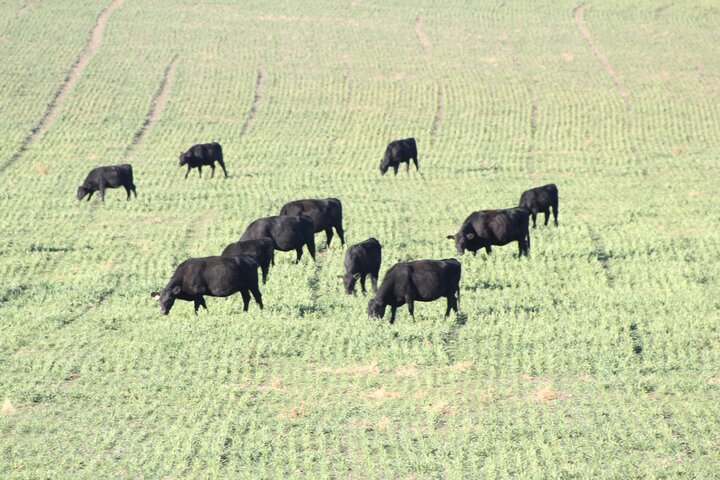Current market conditions for wheat along with the price and short availability of hay in some locations is setting up a scenario where the growing winter wheat crop may have more value for grazing or as a hay crop this spring than to harvest it for grain.
Current market value of hay is ranging from $80 to $150 per ton. In some parts of the state hay is in short supply. Harvested feed costs at current hay prices are ranging from $1.50-$2.25 per cow-calf pair per day. One acre of wheat in May and early June with adequate moisture could provide 45 days or more of grazing for one cow-calf pair. At $2.00 per day this is a value of $90 per acre. For some producers, the option to graze out wheat may net more value to them per acre than harvesting it for grain. This is especially true if recent weather conditions or disease have damaged wheat and will reduce expected grain yields.
In western Nebraska, stocker cattle can be expected to gain very well on wheat during May and early June with gains ranging from 1.5 to 2.5 pounds per head per day. After the stress of this winter, cow-calf pairs may also benefit from this high quality grazing opportunity, especially if cow body condition needs to be improved prior to breeding. Grazing of wheat pasture may also provide the opportunity to get cow-calf pairs out of muddy conditions and on to clean ground which can benefit calf health. Pasturing wheat will facilitate delaying turnout onto pastures or native range, allowing those pastures to have good growth established prior to the start of grazing. Fencing, water and a sacrifice area to get cattle onto should wet conditions occur during grazing are factors that need to be considered when evaluating the potential of grazing wheat. To help reduce the risk of grass tetany, a high magnesium mineral supplement should be fed to cattle starting two to four weeks ahead of turn out and during grazing.
If the grazing of cattle is not feasible, harvesting wheat as hay is another alternative that may net more dollars per acre than harvesting the crop as grain. Wheat harvested as forage will often yield over two tons of hay per acre. It is important to consider the livestock you plan to feed the hay to before you pick your harvest date. For young growing cattle, wheat hay should be cut in the boot stage or as soon as possible after heading to ensure good protein and energy content as well as palatability. If mature dry beef cows are the target audience for the hay, harvest can be delayed a little longer to increase yield but it will also sacrifice nutritive value and palatability. Grazing wheat or harvesting it early in the boot stage for hay could also open up a window of opportunity to plant a summer annual forage into the wheat stubble as a second crop if good moisture conditions are present.
A partial budget that analyzes both costs and projected revenues associated with grazing cattle, cutting for hay or harvesting wheat for grain can be helpful to producers in evaluating these options. Grazing or haying options should also be evaluated in light of the potential impact that they will have on subsequent crop production, insurance and potential government payments.
The following resources from Nebraska Extension are available to assist producers in evaluating these opportunities: Grazing Winter Wheat in Nebraska, Nebraska Farm Custom Rates Statewide Survey, and Nebraska Crop Budgets.
Interviews with the authors of BeefWatch newsletter articles become available throughout the month of publication and are accessible at https://go.unl.edu/podcast.
Topics covered:
Forages, Pasture & range, Grazing systems & best practices, Nutrition

